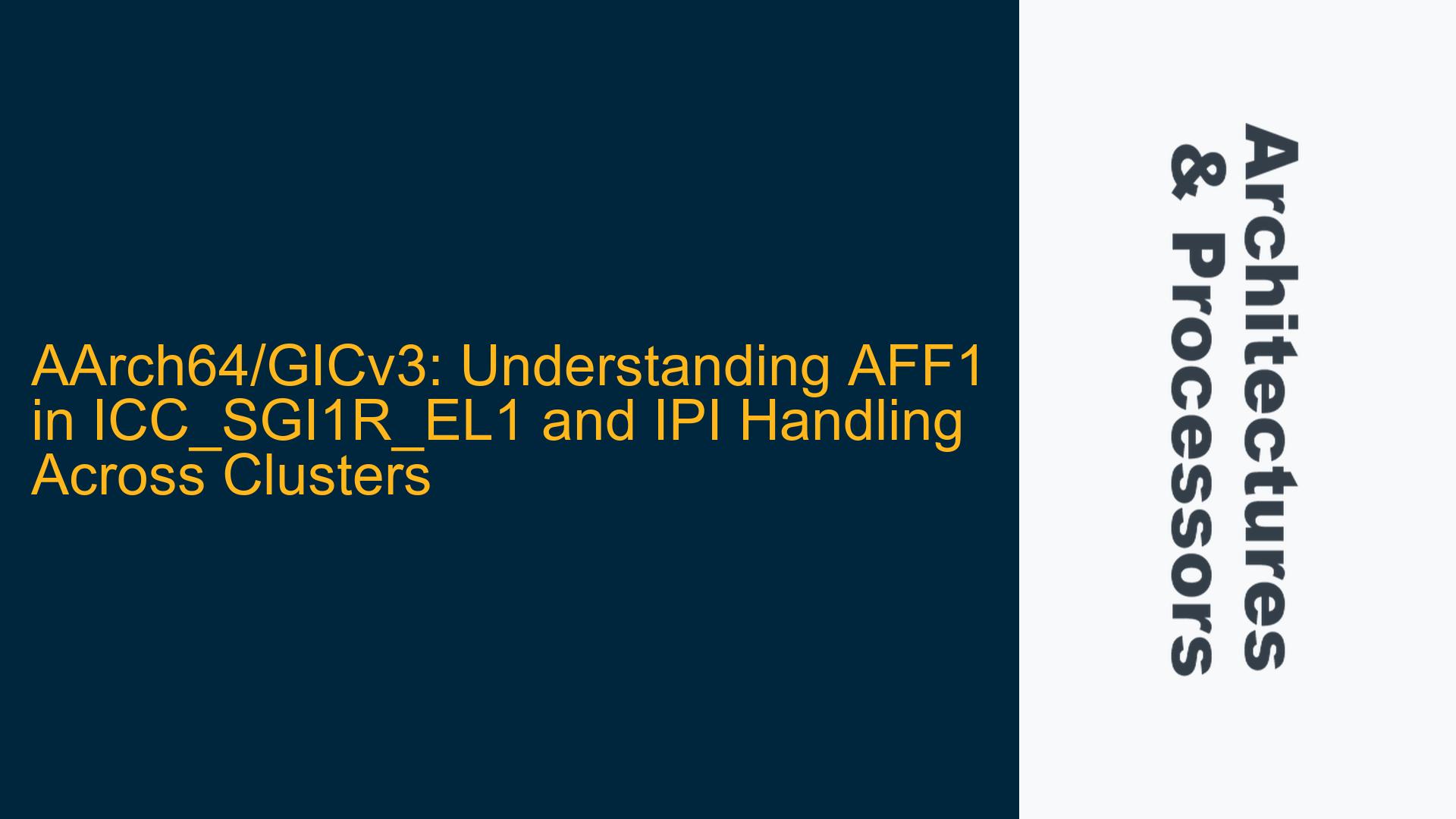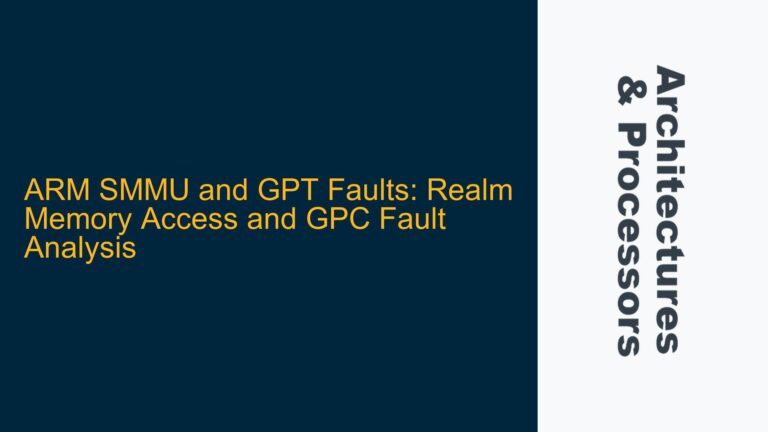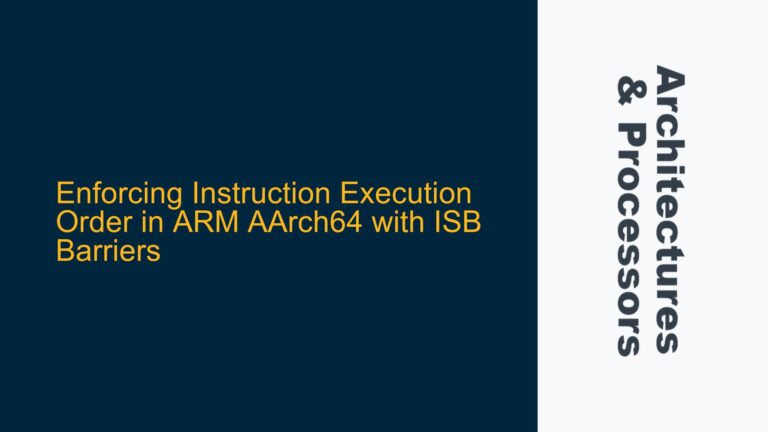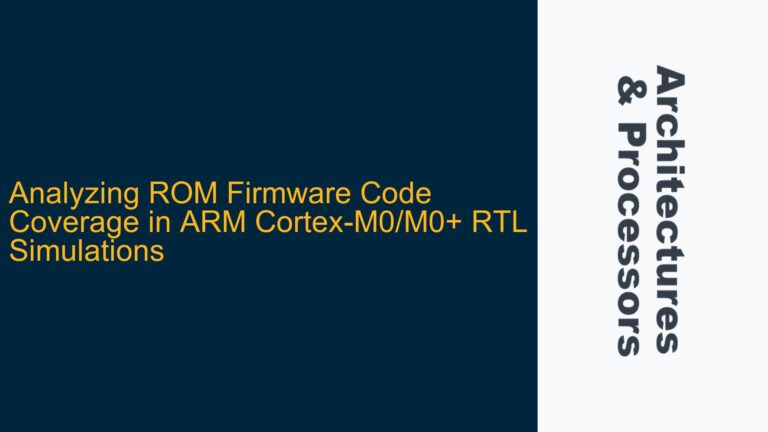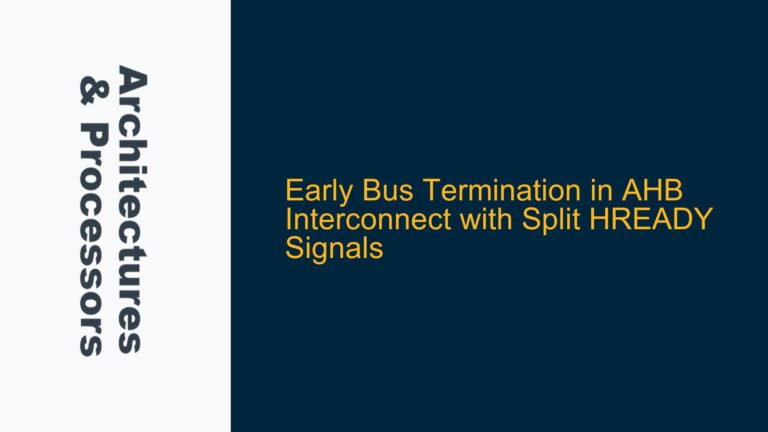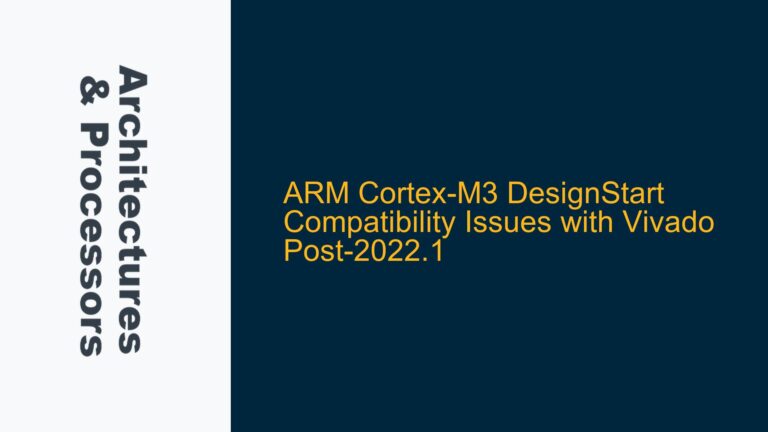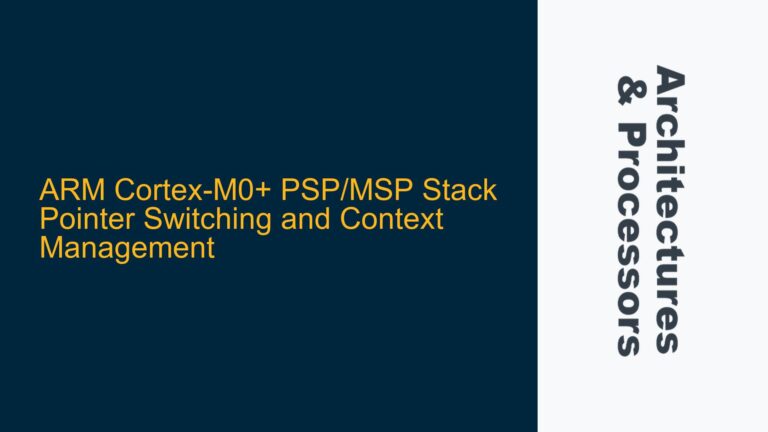ARM Cortex-A Clusters and GICv3: AFF1 Field Behavior in ICC_SGI1R_EL1
The ARM Cortex-A architecture, particularly when paired with the Generic Interrupt Controller version 3 (GICv3), introduces a sophisticated mechanism for handling inter-processor interrupts (IPIs). A key component of this mechanism is the ICC_SGI1R_EL1 register, which is used to generate software-generated interrupts (SGIs). One of the critical fields in this register is AFF1, which determines the target cluster for the IPI. However, the behavior of AFF1 is not always straightforward, especially when dealing with multi-cluster systems.
In the ARM architecture, the Affinity level 1 (AFF1) field in the MPIDR_EL1 register identifies the cluster to which a core belongs. When generating an IPI using ICC_SGI1R_EL1, the AFF1 field must be populated with the appropriate value to target the desired cluster. However, the interpretation of AFF1 in ICC_SGI1R_EL1 is not always consistent across different implementations. Specifically, the question arises whether AFF1 is treated as a bitmask or as a direct address. This distinction is crucial because it determines whether a single write to ICC_SGI1R_EL1 can target multiple clusters simultaneously or if separate writes are required for each cluster.
The behavior of AFF1 in ICC_SGI1R_EL1 is further complicated by the fact that different ARM cores may interpret the AFF1 field differently. For example, in the Cortex-A77, the AFF1 field in MPIDR_EL1 is used to identify the core ID, while AFF0 identifies the thread ID within the core. This means that the AFF1 field in ICC_SGI1R_EL1 must be populated with the core ID, not the cluster ID, when targeting a specific core in a Cortex-A77 system. This deviation from the typical usage of AFF1 underscores the importance of understanding the specific implementation details of the ARM core being used.
In multi-cluster systems, such as the NXP LX2160A, which features 8 clusters with 2 cores each, the handling of IPIs becomes even more complex. If AFF1 is treated as a direct address, then targeting cores in different clusters requires multiple writes to ICC_SGI1R_EL1. For example, to wake up cores 2, 6, and 7 in the LX2160A, two separate IPIs must be generated: one for cluster 1 (core 2) and another for cluster 3 (cores 6 and 7). This inefficiency can lead to increased latency and reduced performance in systems where cross-cluster IPIs are frequent.
The design of the cluster setup in multi-core ARM processors, such as the LX2160A, is often influenced by factors such as yield optimization and cache contention. For instance, NXP’s decision to use 8 clusters with 2 cores each, rather than 4 clusters with 4 cores each, may be driven by the need to minimize cache contention and improve yield. However, this design choice also has implications for IPI handling, as it increases the number of clusters and, consequently, the number of IPIs required to target cores in different clusters.
In summary, the behavior of the AFF1 field in ICC_SGI1R_EL1 is a critical factor in the efficient handling of IPIs in multi-cluster ARM systems. Understanding whether AFF1 is treated as a bitmask or a direct address, as well as the specific implementation details of the ARM core being used, is essential for optimizing IPI handling and minimizing latency in multi-core systems.
Memory Barrier Omission and Cache Invalidation Timing in GICv3 IPI Handling
When dealing with IPIs in ARM systems, particularly those using GICv3, the timing of memory barriers and cache invalidation operations can have a significant impact on system performance and correctness. Memory barriers are used to ensure that memory operations are completed in the correct order, while cache invalidation ensures that the cores involved in the IPI have a consistent view of memory. However, omitting these operations or executing them at the wrong time can lead to subtle and difficult-to-debug issues.
In the context of GICv3, the generation of an IPI using ICC_SGI1R_EL1 involves writing to a system register, which may require a memory barrier to ensure that the write is completed before subsequent operations. Additionally, if the IPI is used to signal a change in shared memory, cache invalidation may be required to ensure that the target core sees the updated data. The timing of these operations is critical, as executing them too early or too late can result in inconsistent memory views or missed IPIs.
One common issue is the omission of memory barriers after writing to ICC_SGI1R_EL1. Without a memory barrier, there is no guarantee that the write to the register has been completed before the core proceeds to the next instruction. This can lead to situations where the IPI is not generated, or where it is generated but not seen by the target core. To avoid this issue, a Data Synchronization Barrier (DSB) should be executed after writing to ICC_SGI1R_EL1 to ensure that the write is completed before proceeding.
Cache invalidation is another critical aspect of IPI handling. When an IPI is used to signal a change in shared memory, the target core must invalidate its cache to ensure that it sees the updated data. However, the timing of this invalidation is important. If the cache is invalidated too early, the target core may miss the IPI or see stale data. If it is invalidated too late, the core may continue to use stale data, leading to incorrect behavior. To address this, the cache invalidation should be performed after the IP
